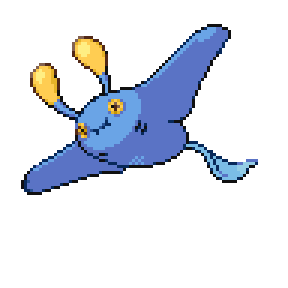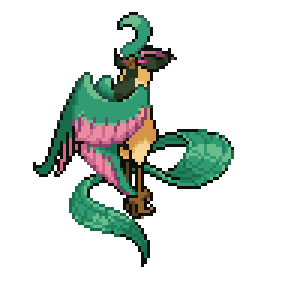14 pokedex entries by ayner
The feathers of Zapvire can store an unfathomable amounts of electricity. A simple graze of their body can paralyze even the sturdiest of Pokémon.

Chintine use the strong electric fields from their antennae to navigate the dark abyss. They swim as fast and gracefully as birds fly in the sky.

Manpip swim as schools of hundreds. They use the algae growing on their head to glide over the sea by rotating them at high speed.

Leafcuno dwells deep in the woods, swiftly rushing between trees to guard its kingdom. Where they land, the surrounding plants are reinvigorated.

Glisdily hunt in mossy caves. When their prey is near, they extend their flexible neck to hit their blind spot, and stab them with their multiple stingers.

The feet of Cradcor are vestigial; it now uses its sticky appendages to move itself. It is said that once this Pokémon grabs something, nothing can unstick it if Cradcor doesn't want it removed.

The sheer determination of Honking has made it able to withstand its normally fatal wound. The sword in its neck can influence the body nonetheless.

Miloroth eat only the tastiest fish Pokémon. When they get out of the water, they brush their hair with their claws over and over.

Despite appearances, the arms of Pyukuroth are squishy appendages that hide tremendous strength. They use them to catch marine fish Pokémon and fight.

The diet of Klefvanha is primarily composed of diverse metal alloys. They roam around junkyards, floating in search of keys, their favorite snack.

In groups, they watch Pokémon and Trainer alike with disdain and pull pranks on them. The length of their hair indicates their rank in the hierarchy.

Buno uses the aroma of their incense to calm other Pokémon. Once this is done, they open their bud and absorb their positive emotions with it.

Ferroki protect their keys from robbers by charging them with their thorny bodies. Their favorite keys often come from abandoned garden shacks.

Geoswine's fur is rough like sandpaper. When they sleep huddled together, they often are mistaken for small rock formations.
